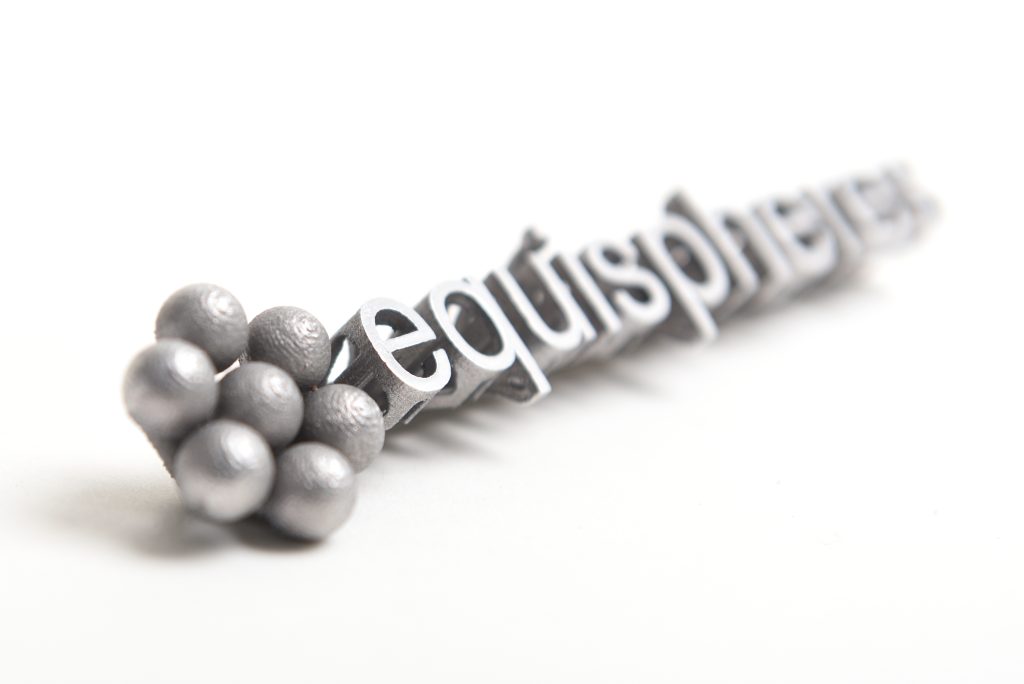Since it was founded in 2015, Canadian firm Equispheres has expanded its reach within the additive manufacturing (AM) industry. This has included significant amounts of funding, as well as big name clients, such as Lockheed Martin. Now, the metal powder manufacturer has achieved another crucial partner in Taiyo Nippon Sanso Corporation (abbreviated “TNSC” and traded on the TYO as 4091), a subsidiary of Mitsubishi Chemical. The gas giant will aid Equispheres in distributing its aluminum powders in the Japanese market.
Equispheres has developed a patent-pending atomization technology that it claims creates “free-flowing, uniform, monograin, agglomerate-free spherical metal powders.” This results in a narrow particle size distribution, good sphericity, flowability, and consistent microstructure. Such characteristics are crucial for the control and performance of metal 3D printing. In turn, it’s possible to 3D print aluminum powders at three times the rate as with other materials on the market, according to Equispheres.
TNSC is Japan’s largest industrial gas producer and one of the five leading industrial gas suppliers globally. These include such gasses as oxygen, nitrogen, and argon. Over the past five years or so, TNSC has slowly been increasing its interest in metal 3D printing, where its gasses could play an important role. In 2017, the Japanese multinational began distributing metal powders from LPW, now owned by Carpenter. Around this time, it also started selling Optomec metal 3D printers. In 2020, this was topped off by the opening of a metal 3D printing R&D lab. TNSC spent a year analyzing Equispheres powder before taking them on as a partner. Now that it has, the company will work together on R&D projects to develop relevant applications.
“Their expertise in metal additive manufacturing, company resources and deep connections to the Japanese market will accelerate the adoption of our material in the marketplace, with an emphasis on the automotive industry,” said Kevin Nicholds, CEO of Equispheres. “TNSC has a history of seeking out best-in-class technology, and we’re very proud that they have added us to their additive manufacturing portfolio. TNSC has the skills and the knowledge to represent and support our aluminum powders, and the company is already deeply integrated with manufacturers and the automotive sector in Japan.”
Tadaharu Watanabe, Senior General Manager of Innovation Business Division (TNSC) said, “We are very impressed with the quality of the Equispheres powder and view it as best-in-class for its ability to print high quality parts at a reduced cost. TNSC plans to offer the powder and our deep knowledge of its application along with our other integrated additive manufacturing services to better serve the AM industry in Japan.”
The various conglomerates under the Mistubishi Group are managed and operate separately. In fact, they compete with one another at times, as is the case with Mitsubishi Electric and Heavy Industries over directed energy deposition. However, they do maintain some shareholder crossover and, altogether, the Group has made serious headway in AM. In addition to the aforementioned, Mitsubishi Chemical has invested significantly in polymer 3D printing, including services and materials production. Via TNSC, then, it has an increased stake in metals, as well.
This raises the question of what happened with TNSC’s relationship with LPW, since Carpenter also produces AlSi10Mg aluminum. This metal is becoming an increasingly competitive space within AM, with SmarTech Analysis noting that aluminum accounted for nearly 10% of 3D printed metal content in 2018. As automotive AM picks up steam, the industry will account for greater aluminum usage, as showcased by Ford’s recent foray into aluminum 3D printing.
Subscribe to Our Email Newsletter
Stay up-to-date on all the latest news from the 3D printing industry and receive information and offers from third party vendors.
You May Also Like
Precision at the Microscale: UK Researchers Advance Medical Devices with BMF’s 3D Printing Tech
University of Nottingham researchers are using Boston Micro Fabrication‘s (BMF) 3D printing technology to develop medical devices that improve compatibility with human tissue. Funded by a UK grant, this project...
3D Printing Webinar and Event Roundup: April 21, 2024
It’s another busy week of webinars and events, starting with Hannover Messe in Germany and continuing with Metalcasting Congress, Chinaplas, TechBlick’s Innovation Festival, and more. Stratasys continues its advanced training...
3D Printing Webinar and Event Roundup: March 17, 2024
It’s another busy week of webinars and events, including SALMED 2024 and AM Forum in Berlin. Stratasys continues its in-person training and is offering two webinars, ASTM is holding a...
3D Printed Micro Antenna is 15% Smaller and 6X Lighter
Horizon Microtechnologies has achieved success in creating a high-frequency D-Band horn antenna through micro 3D printing. However, this achievement did not rely solely on 3D printing; it involved a combination...
































